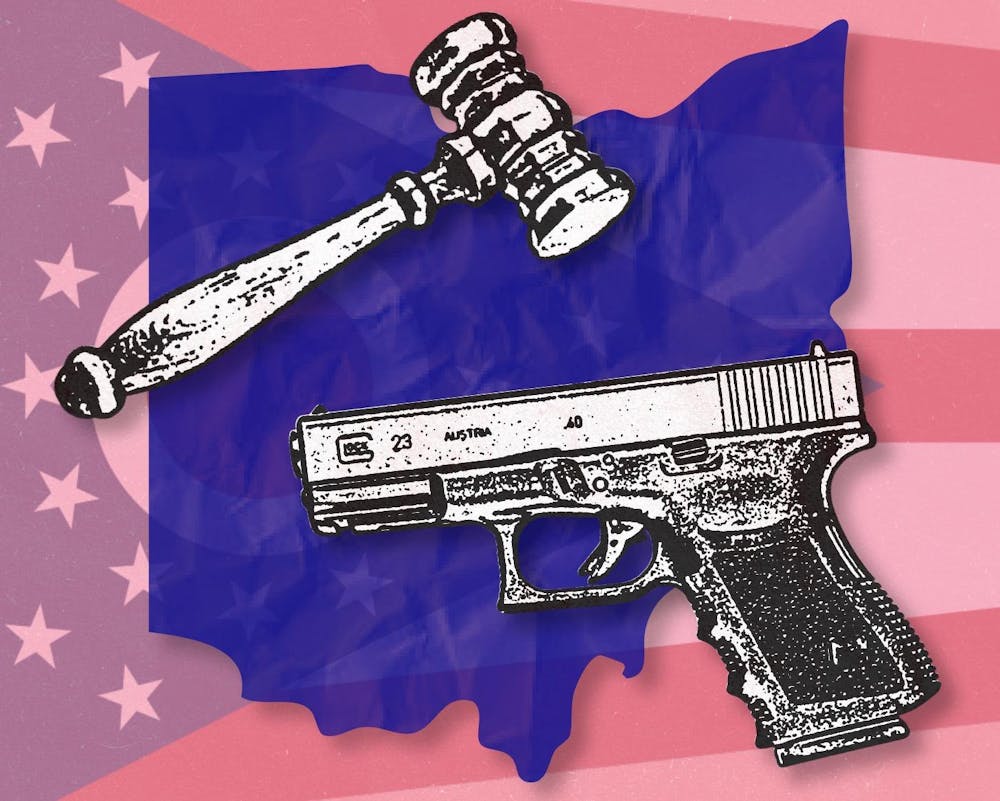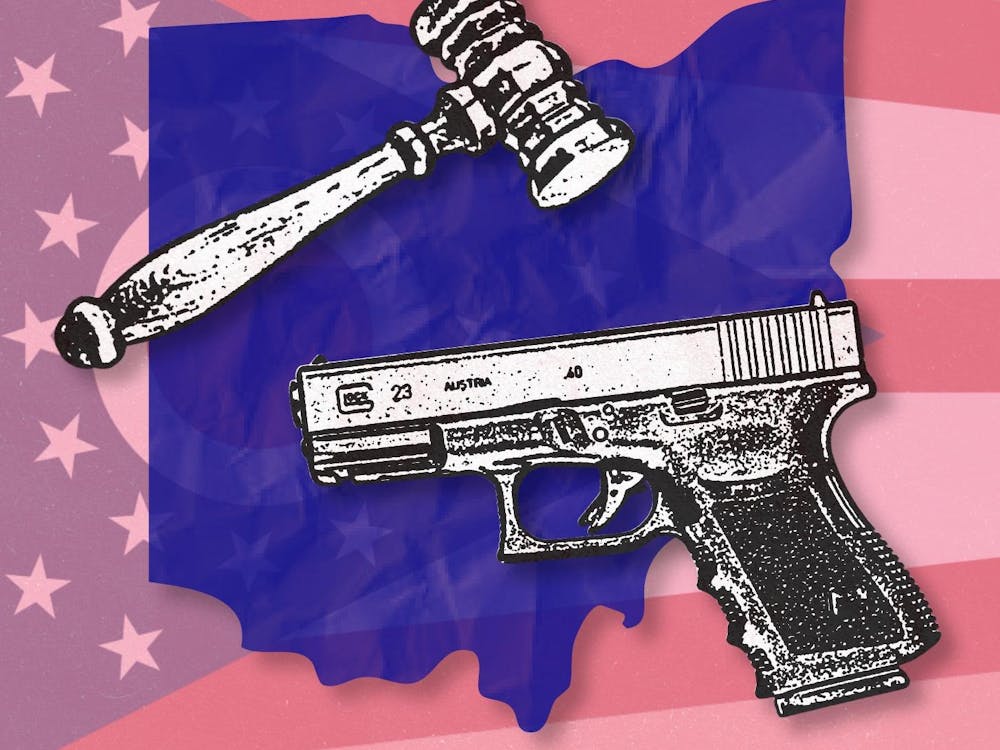This column, as well as four others, was written by a student in Matthew Arbuckle’s Federalism and Intergovernmental Relations (POL 364) class, based on the question of whether cities in Ohio should be able to enact gun laws in their own jurisdiction.
In 2023, Columbus tried to ban magazines holding more than 30 rounds in response to a rise in gun violence. That local ordinance, now tied up in court, reflects a growing push by some Ohio cities to go their own way on firearms regulation.
Proponents argue that local governments should have the freedom to address unique urban safety challenges. But this approach is that Ohio’s current firearm preemption statute, Ohio Revised Code § 9.68, prohibits cities from passing gun laws stricter than the state’s. This isn’t an accident; it’s an intentional safeguard to ensure consistency across the state. If each of Ohio’s 900+ municipalities could enact its own rules, a law-abiding gun owner traveling from Columbus to Cleveland could unknowingly break multiple laws in a single day. One city might ban certain magazines, another might set an age limit and another could restrict open carry altogether.
A fundamental principle of law is clarity. Citizens must be able to understand and follow the rules that govern them. A fragmented regulatory landscape would violate that principle, turning ordinary Ohio citizens into unintentional lawbreakers. This is why the Supreme Court of Ohio upheld preemption in Cleveland v. State, affirming that the state, not cities, has the final say on firearm regulations. The court recognized that uniformity protects both public safety and individual rights.
Supporters of local gun control often use Article XVIII of the Ohio Constitution, which grants cities “all powers of local self-government,” but that authority is not unlimited. When state law speaks clearly on a matter of statewide concern, it overrides local ordinances. Gun rights are explicitly protected not just by the Second Amendment to the United States Constitution, but also by Ohio’s own laws. Firearm ownership isn’t like zoning or garbage collection; it involves a fundamental constitutional right, and the state has a legitimate interest in ensuring that this right is applied equally across Ohio’s urban, suburban and rural communities. Allowing cities to restrict that right would undermine its uniform application and invite endless legal battles.
Critics of state preemption argue that cities face unique gun violence challenges, so they should have more flexibility to act. But public safety isn’t served by legal chaos. In fact, consistent state laws allow law enforcement agencies to cooperate more effectively across jurisdictions. Uniform standards also support lawful gun owners, many of whom live in rural counties but commute or travel to cities daily. A concealed carry permit should mean the same thing in Columbus as it does in Cincinnati or Athens. A gun owner shouldn’t need a lawyer on speed dial every time they cross a city line.
Gun violence is a serious issue, especially in Ohio’s urban centers. But the solution isn’t to let every city become its own regulatory island. Instead, Ohio should pursue statewide strategies that address violence directly. For example, more investment in community violence intervention programs, strengthening background checks already in place, supporting law enforcement collaboration between cities and counties and improving mental health and crisis response services. These kinds of coordinated, state-wide actions address the root causes of violence without jeopardizing constitutional rights or creating legal confusion.
But that reasoning overlooks two key facts. First, local ordinances can’t stop weapons from flowing across city borders. A ban on certain firearms in Columbus is meaningless if those same guns are legal in neighboring suburbs. Criminals don’t respect city limits. Second, home rule authority doesn’t allow cities to infringe on constitutional rights or conflict with state law. The Ohio Supreme Court has repeatedly reaffirmed this. If Columbus can ban certain magazines today, what’s to stop another city from banning handguns tomorrow? Selective local control risks eroding rights for everyone.
This isn’t about ignoring public safety concerns; it’s about addressing them smartly and constitutionally. Fragmented local gun laws may feel empowering to city leaders, but they create confusion for residents, extra burdens for law enforcement and instability for the courts. Most importantly, they threaten to turn fundamental rights into privileges that vary by zip code.
Ohio has a long tradition of protecting the right to bear arms while balancing public safety at the state level. That tradition is worth defending. Cities should focus their energy on programs and partnerships that actually reduce violence, not symbolic ordinances that invite litigation and confusion.
Gun violence is a shared problem, and it demands shared solutions. Allowing every Ohio city to set its own gun rules would divide the state, undermine legal clarity and weaken the very protections that keep our legal system fair and consistent. Ohio must continue to uphold statewide preemption. Cities should not have the authority to enact their own gun control ordinances. We need one law, a clear and consistent standard that respects constitutional rights.
Enjoy what you're reading?
Signup for our newsletter
Karol Korotkin is a senior double-major in political science and Russian, East European and Eurasian studies with a minor in criminal justice. She is part of the club tennis team and a member of Phi Alpha Delta.


